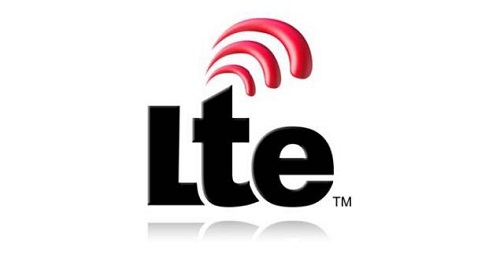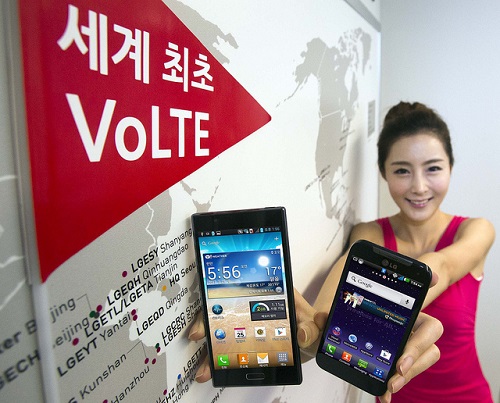Difference Between VoLTE and LTE
What is LTE?
LTE stands for “Long Term Evolution”. In technical terms, it’s a standard for high-speed cellular data communication systems based on its predecessors UMTS and HSPA. It’s a significant leap towards high-performance cellular data service that uses a different radio interface along with a slight core network upgrades. It’s the next level of mobile communications technology (4G) developed and implemented by “3GPP” (Third Generation Partnership Project), a consortium of mobile communication associations.
The need for high peak data rates with significantly higher bandwidth and flexibility in frequency ultimately gave rise to a new standard of high-speed mobile broadband services – LTE. It’s a great upgrade from the low-speed 2G standard (GSM) and 3G technology, providing unmatched user experience for long-term reliability. Owing to the next-generation connectivity and significant upgrades to the original 3G technology for a more simplified architecture, the ITU-R decided to officially call it as 4G LTE.
The idea is to use a different radio interface as the LTE wireless interface wasn’t compatible with the 2G and 3G standards. Further, a simplified and redefined network architecture was required that could reduce transfer latency and still use some elements of the 3G architecture. This gives rise to the 4G LTE which operates more efficiently and provides much higher data rates as compared to the 3G. It offers higher speeds and better stability than the normal LTE.
Theoretically, the downlink rates of LTE can peak at 300 Mbps and uplink rates at 75 Mbps, plus it allows for multi-cast and broadcast streams to tweak signal strength and improve bandwidth. In addition, it’s an IP-based packet-switched network that supports both IPV4 and IPV6. LTE is based on OFDMA (Orthogonal Frequency Division Multiple Access) to enable higher data bandwidths while still providing high degree of resilience to interference.
What is VoLTE?
There was no support for voice in LTE natively, which eventually gave rise to VoLTE, short for Voice over LTE. It’s a much standardized system to make HD voice calling more efficient and faster than 2G/3G networks over 4G LTE. It’s a more advanced cellular data communication technology which allows users to send voice and data over the 4G LTE band without hampering the quality of voice. VoLTE is specifically targeted at managing and improving high-speed voice and data services over 4G LTE networks.
In LTE, the voice quality reduces while making voice calls with the data connection on, thus urging you to turn off the cellular data to enjoy a better voice call service. Some networks would automatically stop the data transfer process to preserve the voice quality over 2G/3G bands. However, the cellular data won’t interfere with the voice call service in case of VoLTE, allowing for uninterrupted voice calling services even with the data connection on.
In technical terms, VoLTE is an IMS (IP Multimedia Subsystem) based network which supports packet switching. The data received from CDMA and GSM networks will get converted to network packets before the broadcast. VoLTE is only limited to IMS-based networks, thereby simplifying interconnectivity for better voice and data services. It allows for a plethora of services to run flawlessly rather than operating different disparate applications simultaneously.
VoLTE doesn’t do much of switching between networks frequencies, which makes call routing faster than the network with standard 3G voice calls, making it beneficial for the end user. It also allows for better inter-network connectivity which eventually takes a lot of strain at desperate times when the network is overloaded. It frees up the bandwidth by optimizing the LTE packet stream, making it light, thereby resulting in superior voice calls and data services.
Difference between LTE and VoLTE
1. Voice Quality
LTE may or may not support voice and data services at the same time without affecting the voice quality, thus making it less efficient than VoLTE networks, which on the other hand, enable faster voice call set-up. Both the users will experience an uninterrupted call session, if they are on VoLTE networks, resulting in seamless calls.
2. Data Connection
In LTE, the network will switch off the data connection while making voice calls, while you don’t need to turn your data connection off while making a voice call in VoLTE. While LTE is targeted for increasing data rates on the 4G bandwidth, VoLTE is targeted towards both voice calling and internet data without affecting each other.
3. Internet Dependability
Internet data should be enabled at all times in order to make free calls and it cannot be turned off. In VoLTE, on the other hand, you don’t have to keep the internet data on to make free calls.
4. Call Set-Up Time
It takes approximately 7 seconds to connect a call on 3G networks, while connecting time reduces significantly if both the users are connected on 3G networks via VoLTE. If both are on VoLTE, it’s only a matter of second.
5. External Software
External software is required for you to make video calls on LTE networks such as Skype, WhatsApp, Facebook Messenger, etc. You don’t need any external software to make video calls on VoLTE networks – you just need your phone number to video call anybody.
LTE vs. VoLTE
| LTE | VoLTE |
| LTE stands for Long Term Evolution. | VoLTE stands for Voice over Long Term Evolution. |
| May or may not support voice call and data services together. | It supports voice call and data services together. |
| Affect the voice quality when using voice and data together. | Using data and voice services at the same time won’t affect voice quality. |
| Call connects a little slower. | Call set-up time is faster than LTE. |
| Third party apps are required to make video calls. | No third party apps are required to make video calls. |
Summary
- There are so many acronyms associated with cellular networks with LTE and VoLTE being thrown around so much, which are often used in the context of marketing. However, both are completely different things.
- LTE is the next-generation of mobile technology which offers high data transfer rates over 4G networks. Theoretically, LTE supports download speed up to 100 Mbps and upload speed up to 50 Mbps. The terms 4G is synonymous with LTE.
- VoLTE, on the other hand, supports both voice and data simultaneously without affecting the quality of other. Unlike the LTE, even voice calls along with web browsing are possible over VoLTE networks. It means you’ll be able to make voice calls and surf web using the data plan.
- VoLTE has quite an edge over its LTE counterpart on many fronts such as voice call quality, HD video calls, battery life, call set-up time, and more.
- Difference Between Serif and Sans Serif - April 22, 2024
- Difference Between HTML and Text - April 19, 2024
- Difference Between FTP and SFTP - April 16, 2024
Search DifferenceBetween.net :
 Email This Post
: If you like this article or our site. Please spread the word. Share it with your friends/family.
Email This Post
: If you like this article or our site. Please spread the word. Share it with your friends/family.
4 Comments
Leave a Response
References :
[0]Dahlman, Erik, Stefan Parkvall, and Johan Skold. 4G LTE/LTE-Advanced for Mobile Broadband. Cambridge: Academic Press, 2011. Print
[1]Dahlman, Erik, Stefan Parkvall, and Johan Skold. 4G, LTE-Advanced Pro and The Road to 5G. Cambridge: Academic Press, 2016. Print
[2]Dahlman, Erik. Stefan Parkvall, Johan Skold, and Per Beming. 3G Evolution: HSPA and LTE for Mobile Broadband (2nd ed.). Cambridge: Academic Press, 2008. Print
[3]"Image Credit: https://commons.wikimedia.org/wiki/File:LTE-Logo.jpg"
[4]"Image Credit: https://www.flickr.com/photos/lge/7736860414"




Very helpful.Thank you.
Blogging is definately not my day job. Im trying to
market my
business by attempting to write about it. But crap could it be ever
difficult. I really do admire your articles, and I had fashioned to comment to
just
give you kuddos on wonderful information and content.
HI Admin, Thank you so much for your information, you are a good author, the content you wrote, really helpful for me..please keep us updated.
Can a Volte Phone accommodate two JIO sims at a time?